What are the ethical considerations for buying lab grown diamonds?
Key takeaway:
- Lab-grown diamonds are an environmentally friendly alternative: Compared to diamond mining, lab-grown diamonds have a significantly lower environmental impact, making them a more sustainable choice.
- Choosing lab-grown diamonds ensures ethical sourcing: By opting for lab-grown diamonds, consumers can avoid supporting diamond mining practices that may involve child labor and unsafe working conditions.
- Lab-grown diamonds offer affordability and quality: While the cost of lab-grown diamonds is typically lower than mined diamonds, they are still of high quality and have the same physical and chemical properties.
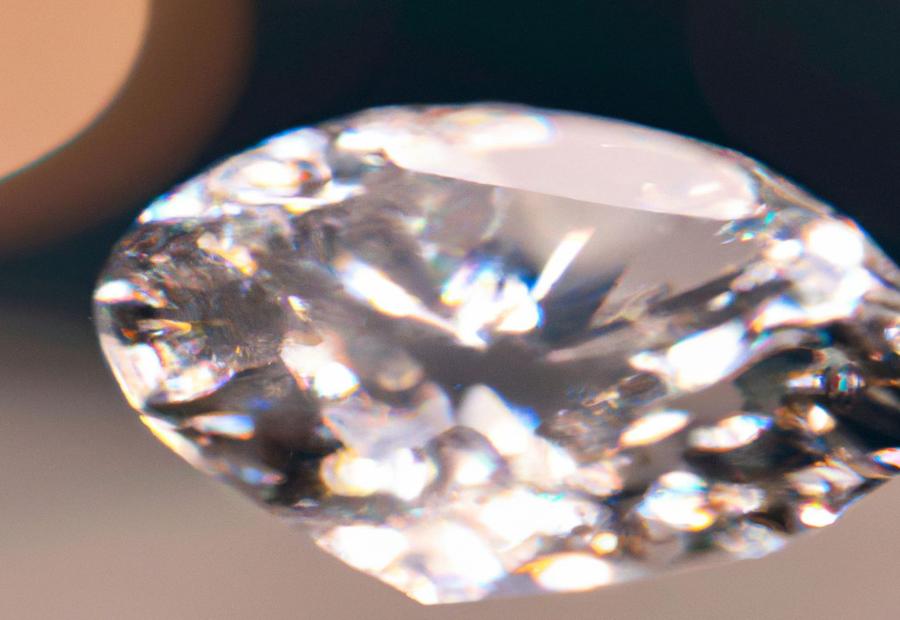
Photo Credits: Www.Lab-Grown-Diamond-Earrings.Com by Charles Thompson
As the demand for ethical and sustainable alternatives to traditional diamonds continues to rise, lab-grown diamonds stand as an intriguing option for conscious consumers. In this section, we will explore the concept of lab-grown diamonds, shedding light on their production process and the reasons behind their growing popularity. Prepare to discover a fascinating world where science meets beauty, and where ethical considerations are at the forefront of diamond purchasing decisions.
Explaining the concept of lab-grown diamonds
Lab-grown diamonds are a revolutionary concept in the diamond industry. They’re made in labs using advanced tech, mimicking the formation process deep in the Earth’s mantle. This happens through chemical vapor deposition or high-pressure, high-temperature synthesis. Carbon seeds are put in a chamber and exposed to extreme temps and pressure. Then, the atoms arrange into crystal structures, resulting in dazzling diamonds identical to mined ones.
This concept has gained traction lately due to several factors. Firstly, it’s an eco-friendly alternative to traditional mining, which can damage ecosystems. Lab-grown diamonds need less energy and water to produce, minimizing their environmental effect.
Ethically, lab-grown diamonds are a great choice too. Traditional mining has long been linked to child labor and unsafe working conditions. Lab-grown diamonds don’t contribute to these practices. So, consumers can have peace of mind that their purchase fits their values.
Cost is another great advantage of lab-grown diamonds. They can be up to 30% cheaper than mined ones, offering excellent value for money.
Lab-grown diamonds are becoming more popular, making traditional diamonds sweat like a miner in an overcrowded shaft.
Highlighting the growing popularity of lab-grown diamonds
Lab-grown diamonds are becoming more and more popular. Their demand is rising, and they’re being recognized as a viable option instead of mined diamonds. Consumers are becoming more conscience of the environmental and ethical implications of diamond mining, so lab-grown diamonds offer a solution that fits with their values. These diamonds are grown in labs, replicating the process that happens deep in the Earth. They have the same chemical composition and physical properties as mined diamonds, making them a sustainable and responsible choice.
The popularity of lab-grown diamonds can be attributed to their eco-friendly nature. No large-scale mining operations are needed, and energy and water usage is greatly reduced. This resonates with people who want to minimize harm to the planet.
Consumers, especially millennials and Gen Z, are more aware of social issues and prioritize sustainability and ethical practices. Lab-grown diamonds provide conflict-free alternatives, and this is increasing their popularity.
It’s clear that the growing popularity of lab-grown diamonds comes from various factors, such as their eco-friendly nature, ethical sourcing, comparable quality, and changing consumer mindset. People are embracing them as a socially responsible choice for jewelry, and this is expected to continue.
Lab-grown diamonds: the sustainable sparkle that saves the planet and your conscience!
Environmental Considerations
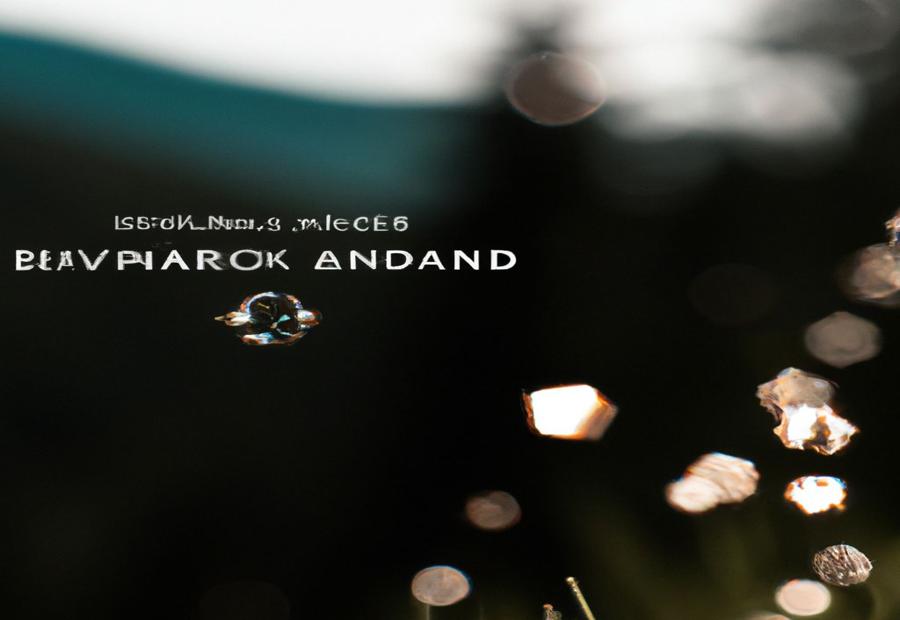
Photo Credits: Www.Lab-Grown-Diamond-Earrings.Com by Jacob Campbell
When it comes to ethical considerations for buying lab-grown diamonds, the environmental impact cannot be overlooked. This section will delve into the environmental considerations surrounding diamond mining and shed light on the eco-friendly nature of lab-grown diamonds.
Discussing the environmental impact of diamond mining
Diamond mining has become a cause for concern due to its environmental effects. It involves deforestation, heavy machinery, and high water and energy usage. Furthermore, diamond mines create a lot of waste and pollution, including sediment runoff that pollutes nearby water sources. These activities can cause harm to ecosystems and local communities.
Luckily, there is an alternate to traditional diamond mining that is more eco-friendly: lab-grown diamonds. Making these diamonds requires much less energy than traditional mining. Plus, it does away with land excavation, thus protecting natural habitats. Moreover, as lab-grown diamonds are made in controlled labs, they don’t cause air or water pollution.
By picking lab-grown diamonds, customers can make a difference in decreasing the environmental impact of diamond mining. The use of these synthetic diamonds lessens the demand for mined diamonds, ultimately making a positive choice towards sustainability and reducing their carbon footprint.
Apart from environmental considerations, ethical factors come into play when buying diamonds. It is important to think about how the diamonds were sourced and the potential effect on the communities and workers involved in the mining process. So, going with lab-grown diamonds not only helps the environment, but also ensures ethical consumption.
Highlighting the eco-friendly nature of lab-grown diamonds
Lab-grown diamonds show their eco-friendly nature. Compared to mined diamonds, they have a much lower environmental impact. Mining uses up energy and water, and can cause destruction of forests, habitats, and soil. This harms local communities and displaces indigenous people. Lab-grown diamonds are made without any of this damage.
By choosing lab-grown diamonds, people can help reduce environmental harm. These man-made gems look the same as mined diamonds, with the same brilliance and fire. They are conflict-free and ethically sourced too. So, they are socially responsible.
As more people understand the environmental impacts of mining, there is more interest in lab-grown diamonds. The younger generation especially wants sustainable choices that match their beliefs. This is changing consumer demand for lab-grown diamonds as an eco-friendly option.
Ethical Considerations
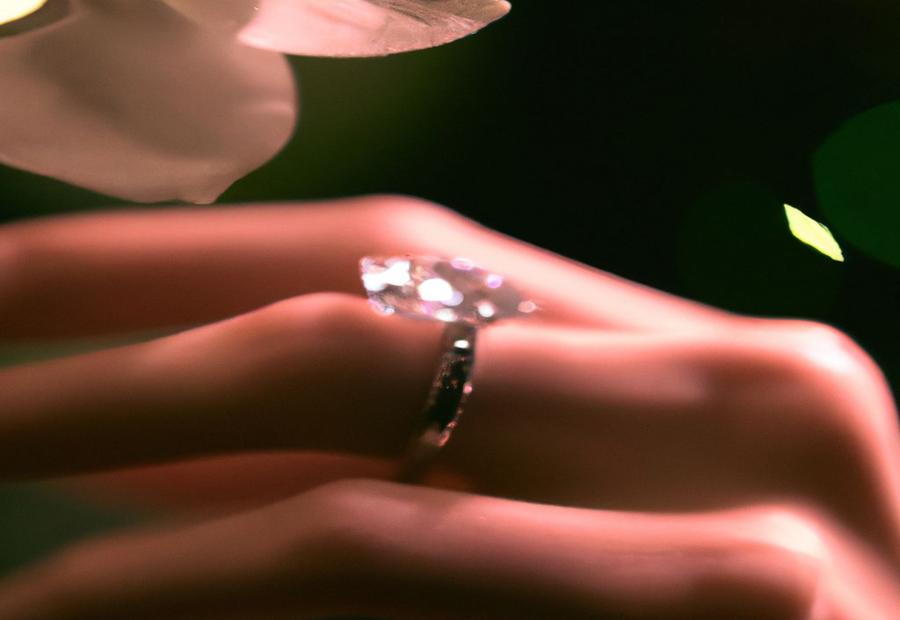
Photo Credits: Www.Lab-Grown-Diamond-Earrings.Com by Dylan Mitchell
When considering the ethical implications of buying diamonds, it is crucial to examine two key factors: the issues of child labor and unsafe working conditions in diamond mines, and the conflict-free and ethically sourced alternative provided by lab-grown diamonds. In this section, we will delve into these aspects, shedding light on the ethical considerations involved in the diamond industry and how lab-grown diamonds offer a more responsible and sustainable choice for jewelry enthusiasts.
Examining the issues of child labor and unsafe working conditions in diamond mines
The diamond mining industry has been known for child labor and unsafe working conditions. Lab-grown diamonds, however, provide an ethical solution. Examining the issues shows that lab-grown diamonds offer a more socially responsible alternative.
Lab-grown diamonds are created without mining, meaning there is no need for dangerous labor practices. This solves the issue of unsafe working conditions, as workers are not subjected to hazardous environments. Plus, since they are produced in laboratories instead of mined from the earth, no children are forced into labor.
Furthermore, lab-grown diamonds are conflict-free jewelry. Mined diamonds can be linked to regions with armed conflicts and human rights issues. Lab-grown diamonds, however, are ethically sourced and free from any ties to these issues. Hence, consumers can purchase jewelry without supporting unethical practices or contributing to the exploitation of vulnerable communities.
Traditional diamond mining has been connected to child labor and unsafe working conditions. Lab-grown diamonds, though, offer an answer. Consumers can make a conscious decision to support an industry that prioritizes ethical sourcing and responsible production methods, by choosing lab-grown diamonds over mined ones.
Explaining how lab-grown diamonds ensure conflict-free and ethically sourced jewelry
Lab-grown diamonds offer an ethical solution. They’re created in a lab, meaning no conflict or human rights abuses. Consumers can trace them, giving peace of mind. Plus, they have a small environmental footprint. Lab-grown diamonds: sparkle without guilt or breaking the bank!
Cost Considerations
Lab-grown diamonds offer an intriguing alternative to mined diamonds, especially when it comes to cost considerations. In this section, we will compare the costs of lab-grown diamonds with their mined counterparts, exploring the affordability and value that lab-grown diamonds provide. With this insightful analysis, you will gain a better understanding of the economic advantages associated with opting for lab-grown diamonds.
Comparing the cost of lab-grown diamonds with mined diamonds
Lab-grown diamonds can be compared to mined diamonds to determine affordability and value. These gems offer an eco-friendly, ethical option for consumers, but how much do they cost?
To compare, let’s look at the following table:
| Factor | Lab-Grown Diamonds | Mined Diamonds |
|---|---|---|
| Price | Generally more affordable | Typically more expensive |
| Production Process | Requires advanced technology and expertise | Involves extensive mining operations |
| Availability | Increasingly accessible with growth in production capacity | Limited due to geological constraints |
| Market Value | Can retain their value similarly to mined diamonds | Market value influenced by various factors |
As seen, lab-grown diamonds are usually cheaper. This is because they require advanced tech and expertise, while mined diamonds need extensive mining.
Plus, lab-grown diamonds are becoming more accessible due to increased production capacity. But, mined diamonds are limited due to geological constraints, making them more pricey.
It’s worth noting that both lab-grown and mined diamonds can retain their value. The market value of these gemstones is impacted by demand, quality, and market dynamics.
Exploring the affordability and value of lab-grown diamonds
Lab-grown diamonds offer an affordable and valuable alternative to mined diamonds. Their cost is lower, due to the advanced technology used in their production. As such, consumers can get quality diamonds at lower prices. These diamonds have the same physical and chemical properties as mined diamonds, so they look the same. They’re also certified for authenticity.
The value of lab-grown diamonds extends beyond their affordability. They are ethically sourced and eco-friendly, giving consumers a socially responsible choice. They also reduce the demand for mined diamonds, as more people become aware of the environmental and ethical concerns surrounding diamond mining.
In conclusion, exploring the affordability and value of lab-grown diamonds reveals why they are an attractive choice. They are affordable, ethically sourced, and sustainable, without compromising on quality or aesthetics.
Quality and Aesthetics
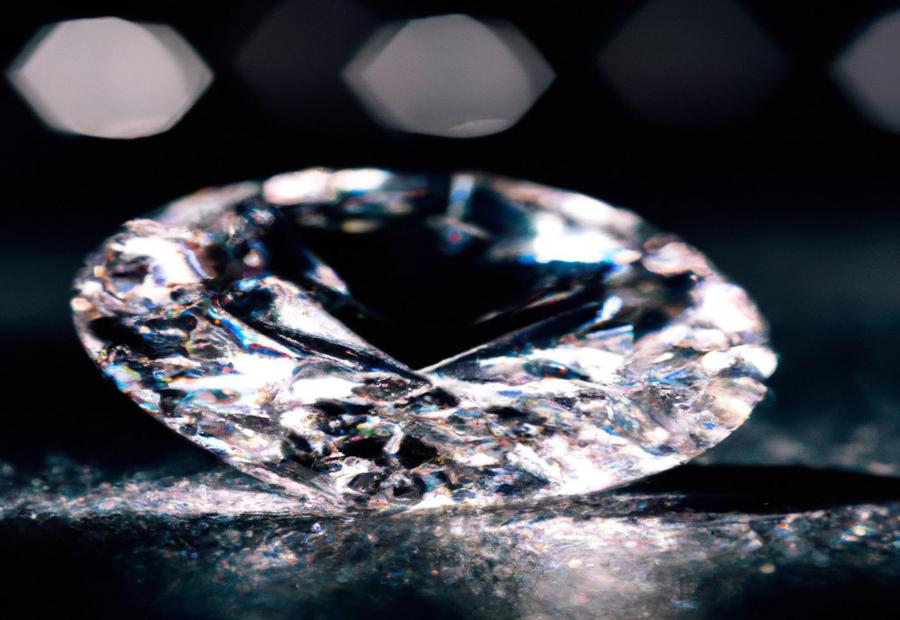
Photo Credits: Www.Lab-Grown-Diamond-Earrings.Com by Jeffrey Lewis
Addressing misconceptions and highlighting the physical similarities, we delve into the quality and aesthetics of lab-grown diamonds, shedding light on the authenticity and beauty they possess compared to mined diamonds.
Addressing misconceptions about the quality and authenticity of lab-grown diamonds
Misconceptions about lab-grown diamonds abound. However, knowledge of their process and characteristics can help dispel them. Lab-grown diamonds are authentic, having the same physical and chemical properties as mined diamonds. They are created in a lab using advanced tech, ensuring consistent quality. Plus, they possess the same brilliance, fire, and sparkle as mined diamonds. Advanced techniques replicate natural diamond growth, resulting in identical crystal structures and looks. Spectroscopy and GIA grading reports help identify and certify these diamonds.
Understanding these points gives consumers insight when considering ethically sourced alternatives. Lab-grown diamonds maintain the same beauty, durability, and authenticity as mined diamonds. Advanced tech recreates natural diamond formation. Plus, certification via GIA protocols offers quality assurance. Adopting a socially responsible stance doesn’t mean sacrificing style or splendor. Ultimately, why settle?
Explaining the physical and chemical similarities of lab-grown diamonds to mined diamonds
Lab-grown diamonds, also known as lab-created gems, are exactly like mined ones in terms of physical and chemical characteristics. They have the same crystal structure, hardness, and sparkle. Through advanced tech processes, these man-made diamonds are made with the same conditions as natural ones. Even certified gemologists can’t tell the difference!
These diamonds are just as beautiful, shiny, and long-lasting as the real thing. Plus, their quality is more consistent. They offer a socially responsible option for jewelry buyers.
And then there’s the sustainability. By choosing lab-made diamonds, consumers make a smaller environmental impact than traditional mining methods. No large-scale mining needed, or deforestation or habitat destruction.
In conclusion, when comparing lab-grown and mined diamonds, it’s clear that lab-grown diamonds are a sustainable choice without compromising on quality or beauty.
Consumer Perception and Acceptance
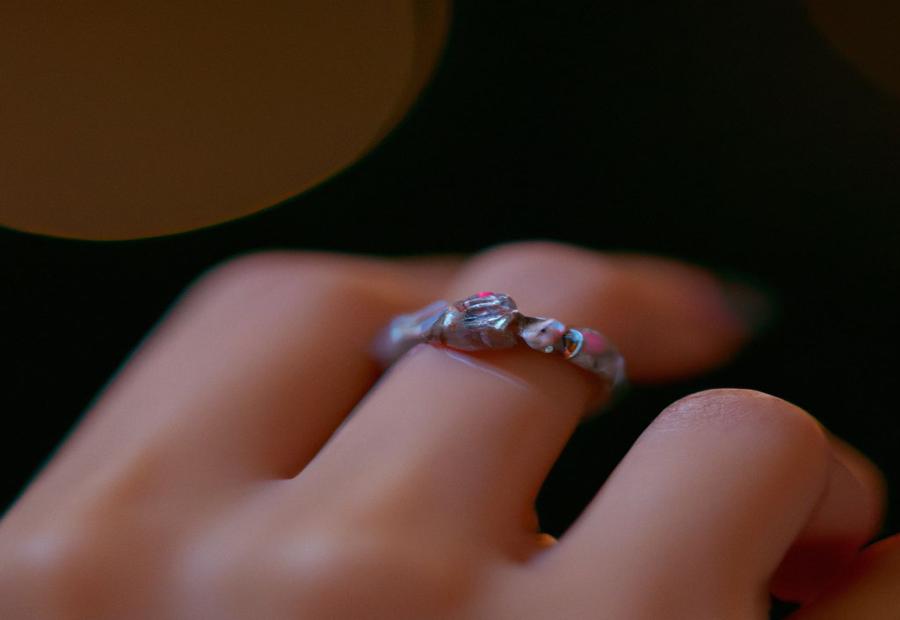
Photo Credits: Www.Lab-Grown-Diamond-Earrings.Com by Jonathan Campbell
Consumer perception and acceptance of lab-grown diamonds is a fascinating topic, particularly when examining the generational divide and potential shifts in consumer demand for ethical alternatives. With changing attitudes towards sustainability and ethical sourcing, it is crucial to understand how consumers perceive and accept lab-grown diamonds. The discussion surrounding the generational divide and the potential changes in consumer perception will shed light on the evolving landscape of the diamond industry.
Discussing the generational divide in accepting lab-grown diamonds
Lab-grown diamonds have sparked a divide between generations. Millennials and Gen Z tend to be more open to this alternative. Reasons include environmental and ethical considerations.
Younger consumers worry about the impact of diamond mining. They realize lab-grown diamonds provide an eco-friendly option. They don’t require mining or excavation, instead they are created using advanced technology in labs.
Ethical issues related to traditional diamond mining further contribute to the divide. These include child labour and unsafe working conditions. Lab-grown diamonds offer a conflict-free solution for those prioritizing social responsibility.
It is essential to understand each generation’s views. While older generations may prefer natural diamonds, awareness about lab-grown diamonds can lead to increased acceptance. A study showed 70% of millennials would consider buying a lab-grown diamond for an engagement ring.
Will consumers embrace lab-grown diamonds or will skepticism remain?
Analyzing potential changes in consumer perception and demand for ethical alternatives
The demand for ethical alternatives is rising, and it has the potential to alter the diamond industry. Consumers are becoming aware of the environmental and ethical issues related to mining traditional diamonds. They are seeking lab-grown diamonds as a sustainable and socially responsible alternative. Lab-grown diamonds don’t require any destructive practices or exploitative labor – making them a great choice.
Lab-grown diamonds are attractive for those who want ethically sourced jewelry. They don’t contribute to harmful mining or unethical labor. And, they look and feel identical to mined diamonds.
As more people realize the benefits of lab-grown diamonds, their popularity will increase. Millennials and Gen Z are especially likely to embrace them due to their alignment with sustainable values. Analyzing potential changes in consumer perception and demand for ethical alternatives is important.
Conclusion

Photo Credits: Www.Lab-Grown-Diamond-Earrings.Com by Benjamin Lopez
As we conclude our exploration of ethical considerations for buying lab-grown diamonds, let’s summarize the key perspectives and benefits discussed. We’ll also examine why the adoption of lab-grown diamonds represents a socially responsible choice. So, join us as we wrap up this insightful journey into the world of lab-grown diamonds and their ethical implications.
Summarizing the ethical considerations and benefits of buying lab-grown diamonds
Lab-grown diamonds present ethical considerations and advantages for conscientious buyers. Mining for diamonds has been linked to deforestation, pollution, and other environmental damage. In comparison, lab-grown diamonds are created in a controlled laboratory setting, meaning that they have a minimal ecological footprint. Additionally, purchasing lab-grown diamonds helps to avoid exploitative labor practices, as child labor and unsafe working conditions in diamond mines have been reported.
Cost is another factor to consider when buying diamonds. Natural diamonds are often expensive due to their rarity and demand. However, lab-grown diamonds offer a more cost-effective alternative without compromising on quality or aesthetics. These diamonds possess the same physical and chemical properties as mined diamonds, and are indistinguishable to the naked eye.
Lastly, consumer opinion and acceptance are important for driving change towards ethical alternatives such as lab-grown diamonds. Although there may be a generational divide in acceptance of these alternatives currently, attitudes can shift over time. As awareness grows about the ethical implications of traditional diamond mining, there may be an increase in demand for lab-grown diamonds as a socially responsible option.
In conclusion, lab-grown diamonds are a compelling choice for conscious consumers due to their environmental sustainability, elimination of unethical labor practices, affordability, authenticity, and potential changes in consumer perception.
Advocating for the adoption of lab-grown diamonds as a socially responsible choice
Consumers are getting more aware of the environmental and ethical implications of diamond mining. Hence, socially responsible alternatives are needed. Lab-grown diamonds provide an eco-friendly and ethically sourced choice of jewelry.
Advanced technology is used in a laboratory setting to replicate the natural process of diamond formation.
By promoting lab-grown diamonds as a socially responsible choice, pressing environmental concerns can be addressed and conflict-free sourcing can be ensured.
Lab-grown diamonds have a lower carbon footprint compared to mined diamonds. Mining activities often cause land disturbance, deforestation, and pollution. They also require a lot of energy and emit greenhouse gases, worsening climate change.
Lab-grown diamonds also offer an ethically superior option over mined diamonds. Traditional diamond industry is ridden with issues like child labor and unsafe working conditions. Choosing lab-grown diamonds assures that the jewelry has not been sourced through exploitation or human rights abuses. Lab-grown diamonds are not produced using forced labor or unfair wages.
To advocate for the use of lab-grown diamonds as a socially responsible choice, misconceptions about their quality and authenticity must be debunked. Lab-grown diamonds have the same physical and chemical properties as mined diamonds. They possess the same brilliance, hardness, and durability. By educating consumers about the similarities between lab-grown and mined diamonds, acceptance of lab-grown diamonds as a high-quality alternative can be encouraged.
Pro Tip: Choose lab-grown diamonds as a socially responsible choice of jewelry. This will help preserve the environment and ensure that your purchase aligns with your values.
Some Facts About Ethical Considerations for Buying Lab Grown Diamonds:
- ✅ Lab grown diamonds are a more environmentally friendly alternative to mined diamonds. (Source: Team Research)
- ✅ Lab grown diamonds do not require extensive mining operations, reducing the damage to the environment. (Source: Team Research)
- ✅ Lab grown diamonds ensure conflict-free sourcing and are more ethically responsible compared to mined diamonds. (Source: Team Research)
- ✅ Lab grown diamonds are more affordable than mined diamonds, making them a cost-effective option. (Source: Team Research)
- ✅ Lab grown diamonds offer a sustainable and socially responsible alternative to traditional mined diamonds. (Source: Team Research)
FAQs about What Are The Ethical Considerations For Buying Lab Grown Diamonds?
What are the ethical considerations for buying lab grown diamonds?
Lab grown diamonds offer several ethical benefits compared to traditionally mined diamonds:
- Environmentally Friendly: Lab grown diamonds have a lower carbon footprint and do not require extensive mining operations that can damage ecosystems
- No Poor Working Conditions: Lab grown diamonds are not associated with the unfair labor practices and poor working conditions often found in diamond mines
- No Uprooting Wildlife: Unlike mined diamonds, lab grown diamonds do not contribute to the displacement of wildlife and destruction of habitats
- No Ethical Ramifications: Lab grown diamonds are guaranteed to be conflict-free, making them a more ethical choice for consumers
- No Impurities: Lab grown diamonds do not contain impurities and have more brightness and clarity compared to some mined diamonds
What is the Trucost Report and its relevance in the lab grown diamond industry?
The Trucost Report is a study commissioned by the Diamond Producers Association. The report challenges the environmental claims of lab grown diamonds and argues that their carbon footprint can be higher than that of mined diamonds if the energy source used in the lab is dirty. However, experts argue that the report does not consider the full life cycle of mines and the energy use of exploration. They believe that the environmental impact of mined diamonds is far greater. The Trucost Report is relevant in the lab grown diamond industry as it highlights the ongoing debate between lab grown and mined diamonds.
How does the lab grown diamond industry address the climate crisis?
The lab grown diamond industry offers a more environmentally friendly alternative to traditional diamond mining, which has a significant carbon footprint. Lab grown diamonds are produced using advanced technology in laboratories, eliminating the need for large-scale mining operations that contribute to climate change. By choosing lab grown diamonds, consumers can support the industry’s efforts to address the climate crisis by reducing carbon emissions and promoting sustainable practices.
Are lab grown diamonds visually identical to traditionally mined diamonds?
Yes, lab grown diamonds are visually identical to traditionally mined diamonds. They have the same physical and chemical properties, sparkle, hardness, and durability. Lab grown diamonds are indistinguishable from mined diamonds to the naked eye or even with gemological equipment. This makes them an attractive option for those who prioritize the visual characteristics of diamonds.
Do lab grown diamonds save you money compared to traditionally mined diamonds?
Yes, lab grown diamonds are often more affordable than traditionally mined diamonds. The cost savings can range from 30% to 40%, making lab grown diamonds a cost-effective choice for buyers. This affordability allows consumers to purchase larger or higher-quality diamonds within their budget. By choosing lab grown diamonds, buyers can enjoy the same visual and chemical properties as mined diamonds at a lower price point.
What are the environmental benefits of choosing lab grown diamonds?
Lab grown diamonds have several environmental benefits compared to traditionally mined diamonds:
- Protection of Natural Resources: Lab grown diamonds do not deplete natural resources at the same rate as diamond mining
- Less Land Scarring: Lab grown diamonds do not require large open-pit mines, which scar the land and disrupt ecosystems
- Airborne Toxin Reduction: Lab grown diamond production processes generate fewer airborne toxins compared to diamond mining
- Recycling Waste: Lab grown diamond production often involves recycling waste materials, reducing overall waste and minimizing environmental impact
- Carbon Neutral Mines: Some lab grown diamond producers strive to achieve carbon neutrality in their operations, further reducing their environmental footprint

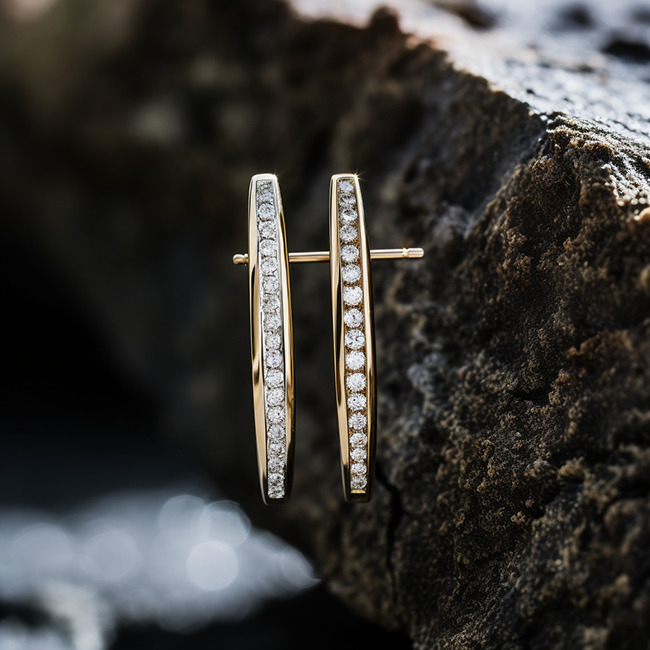
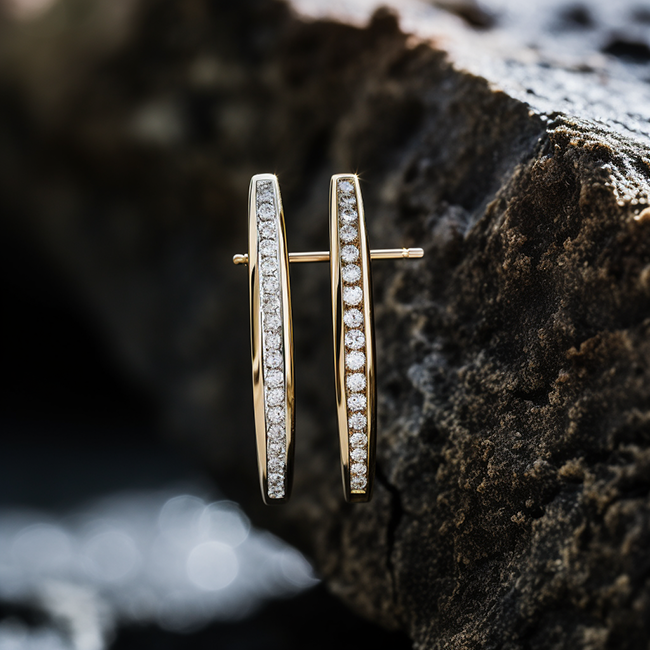
Leave a Reply